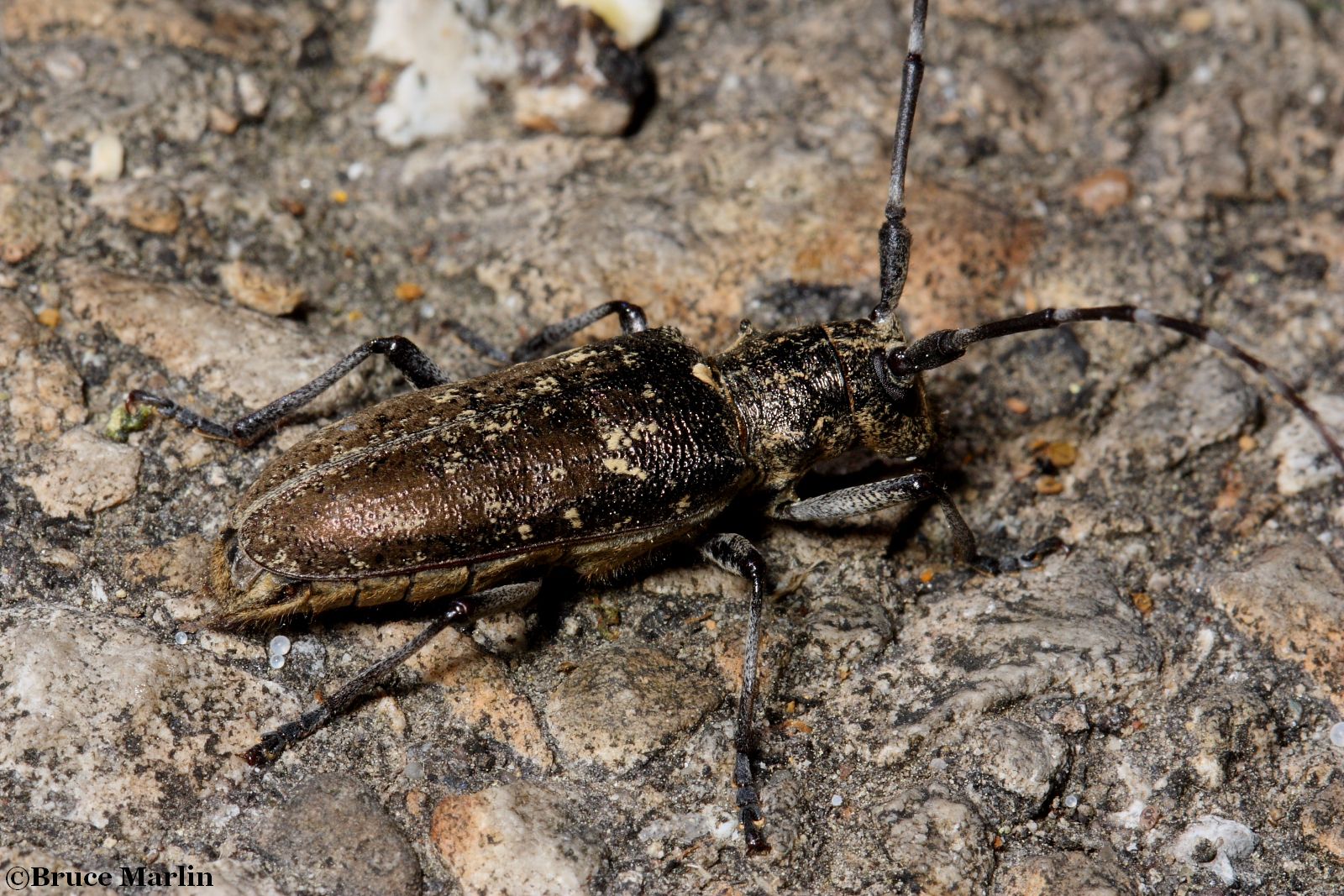Whitespotted Sawyer Beetle – Monochamus scutellatus
Live beetle photographed at White Pines Forest, Ogle County, Illinois. Size: 20mm
When the first settlers arrived in Ogle County, Illinois in the early 1800s, they found a pristine, 700-acre stand of white pines along the banks of what became Spring and (what else) Pine Creeks. It is here, at White Pines Forest State Park, amidst the remnants of what was then an unusual southern extent of the eastern white pine species Pinus strobus that I found this huge sawyer beetle.
In the Canadian oil sands provinces, this insect is colloquially called “tar sand” or “oil sand” beetle because of its affinity for the smell of bitumen, said to resemble injured-tree-in-distress chemicals [4]. The species epithet and common name both refer to the light-colored, triangular scutellum. Sawyer beetles are so-called for the piles of “sawdust” the larvae often leave behind.
Nearly an inch long with antennae 1.5 times that, this impressive beetle is a pest of coniferous forests across North America. Hosts most often include balsam fir, spruce and especially white pine. Adult female beetles are attracted to chemicals released by injured, dying, or recently deceased trees, where they lay their eggs in crevices in the bark or open wounds.
When the eggs hatch, the resultant larvae bore a tunnel through the phloem into the vascular cambium (the still-developing inner bark of the tree that will eventually conduct nutrients and liquids from the roots to the foliage), where they mine beneath the bark and mature through several instars, eventually pupating in a gallery near the surface. Adults exit these galleries in late spring (this specimen was photographed on May 22nd) and early summer, and begin feeding on the tender bark of new twigs, causing the tips to die and turn brownish-red [2].
The species epithet and common name both refer to the light-colored, triangular scutellum. Also distinctive are the two knobby projections on the pronotum. The antennae sit in ball-and-socket joints nearly transecting the compound eye.
With over 20,000 species described, Cerambycidae is a large family. Many are serious pests, with the larvae boring into wood, where they can cause extensive damage to either living trees or untreated lumber. Adult beetles feed on various plants, sometimes causing grave harm to trees. A number of species mimic ants, bees, or wasps (see Locust Borer), though a majority of species are cryptically colored.
References
- Douglas Yanega, Field Guide to Northeastern Longhorned Beetles (Illinois Natural History Survey, 1996).
- USDA Forest Service, Buggwood Network, “Whitespotted Sawyer Monochamus scutellatus (Say)”
- Bruce Marlin, Bugguide.net, “Whitespotted Sawyer Beetle – Monochamus scutellatus“
- Bugguide.net, “Whitespotted Sawyer“
Beetles Main | Beetles Index | Longhorns | Leaf Beetles | Soldier | Blister | Lady | Scarab

